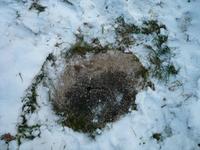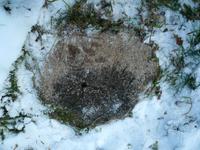You are in: Europe -> Belarus -> Struve Geodetic Arc, and traditional search or Image Gallery will yield results of this site only
Struve Geodetic Arc
| Site number: | 1187 |
|
| Type of site: | Cultural | |
| Date: | 1816-1855 | |
| Date of Inscription: | 2005 | |
| Location: | Europe,Belarus,Estonia,Finland,Latvia,Norway,Moldova, Russia,Sweden,Ukraine | |
Up to 75 images are shown here. Click on each for more details or on Image Gallery for more images.
Six official UN languages:
Arabic,
Chinese,
English,
French,
Russian,
Spanish
Other languages: Croatian, Dutch, Finnish, German, Greek, Hebrew, Hungarian, Italian, Japanese, Lithuanian, Norwegian-bokmål, Norwegian-nynorsk, Polish, Portuguese, Swedish, Ukrainian, Vietnamese
Other languages: Croatian, Dutch, Finnish, German, Greek, Hebrew, Hungarian, Italian, Japanese, Lithuanian, Norwegian-bokmål, Norwegian-nynorsk, Polish, Portuguese, Swedish, Ukrainian, Vietnamese
| Description: | A chain of survey triangulations, the Struve Arc stretches over 2,820 km through ten countries, from Hammerfest in Norway to the Black Sea. Astronomer Friedrich Georg Wilhelm Struve marked these spots (points of a survey) between 1816 and 1855, creating the first accurate measuring of a long segment of a meridian. Marking a significant step in the development of earth sciences and topographic mapping, the Struve Arc helped ascertain the exact size and shape of our planet. This marks an extraordinary instance of scientific collaboration of monarchs for a scientific cause and among scientists across borders. Originally the arc was made up of 258 main triangles with 265 main station points. The currently listed site includes only 34 of the original station points, which are marked with different markings, such as a drilled hole in rock, iron crosses, cairns, or built obelisks. --WHMNet paraphrase from the description at WHC Site, where additional information is available. | |
| The Struve Geodetic Arc is a chain of survey triangulations stretching from Hammerfest in Norway to the Black Sea, through ten countries and over 2,820 km. The chain was established and used by the German-born Russian scientist Friedrich Georg Wilhelm von Struve in the years 1816 to 1855 to establish the exact size and shape of the earth. At that time, the chain passed merely through two countries: Sweden-Norway and the Russian Empire. In 2005, the chain was inscribed on the World Heritage List. --Wikipedia. Text is available under the Creative Commons Attribution-ShareAlike License. | ||
| Source: | http://whc.unesco.org/en/list/1187 | |
| Reference: | 1. UNESCO World Heritage Center, Site Page. | |

























































